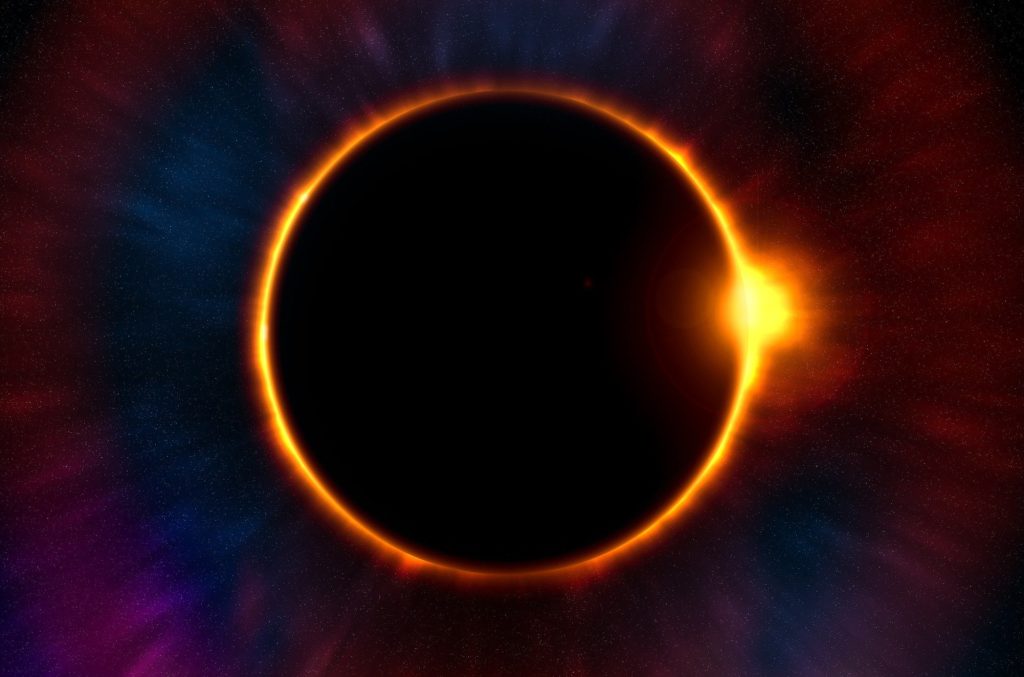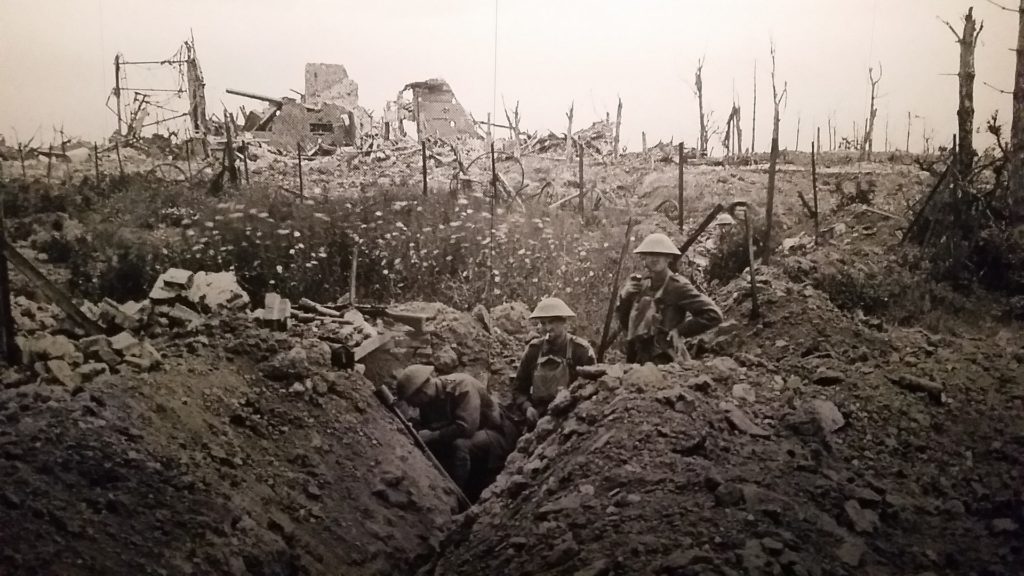The basic text of western astrology, written by Claudius Ptolemy around 150 A.D., specifies that astrology cannot foretell natural disasters, including epidemics. His logic is that those are not cosmic events, but earthly events. Yet astrology in retrospect can identify patterns that might dissuade us from future plans to carry masses of people overseas and tolerate official dissembling when physicians notice something is wrong.

U.S. residents might recall the “great American eclipse” of August 21, 2017, which cast its path of totality west to east, from Oregon to South Carolina. The previous comparable solar eclipse, on June 8, 1918, unrolled along a similar pathway, but from Washington State to Florida. The path of totality in 1918 included Haskell County, Kansas, the “ground zero” of that virus, as far as anyone knows.
Those paths are interesting, but astrologically their differences are meaningful:
- The 1918 flu virus originated in the U.S. and existed six months before the solar eclipse.
- The 2020 coronavirus, originating in China and first reported in December 2019, lagged two and a half years behind 2017’s “great American eclipse.” Most astrologers say two and a half years is too long after an eclipse to believe in cause and effect. Six months is usually the limit.
- The 1918 eclipse occurred in the zodiac sign Gemini; the 2017 eclipse in Leo. Eclipses in different zodiac signs are said to have different consequences. But the only consequence that truly matters is that pandemics cause death and sickness.
- The longest moment of totality, the eclipse’s “peak” moment of intensity, in 1918, was in the Pacific Ocean south of Alaska, in uninhabited waters. In 2017, the longest moment occurred in southern Illinois. Nothing special happened at either place.
So comparing the two is like comparing an apple with an orange. Yet it’s eerie, and we humans love to look for eerie and scary signs and portents, especially of tragic events and especially when they’re in the making.

The ancients believed that solar eclipses preceded the deaths of kings or important leaders. They thought that about comets, too. And also about Saturn or Mars transits. They were wrong. Eclipses, solar and lunar, total and partial, occur all over the world, a dozen per year, and leaders of countries in the shadow path survive. Their astrological voltage is much less than the power ascribed to them, the simple and dramatic power to sicken and kill people.
The locales with the longest solar-eclipse totalities, the ancients said, were epicenters of negativity, but if no one lives there (as in 1918), and if nothing notably bad happens there after two and a half years (as in 2020), what they said is not true. The best way to benefit from the comparison between the two pre-epidemic solar eclipses is to consider not how many lives were lost to the flu in 1918 but how countless lives were saved.
The Last Great Pandemic
1918 In January 1918, a local doctor in Haskell County, Kansas, wrote to Washington, D.C. to report a type of influenza that killed mostly healthy young people. He’d never seen such an illness.
In March 2018, two months later, U.S. Army doctors recorded a virulent influenza outbreak at Camp Funston, Kansas, three hundred miles east of Haskell County. Warnings and deaths were ignored because the priority was sending abroad to Europe, Africa, and beyond, a million fresh U.S. soldiers to help allies win what we now call World War One.

World War One was the first to employ new weapons technologies such as airplanes, tanks, poison gas and machine guns, and to benefit from wireless communication. The battles were costly in terms of lives lost, yet U.S. participation decided the victory – and unwittingly spread the killer virus, nicknamed “The Spanish Flu” only because Spain was the first country honest enough to report it. The pandemic raged all summer, all over the world, through soldiers and civilians alike, most fiercely in September, October, and November 1918, with a deadly final wave in spring 1919. Twenty million to 50 million people died of influenza, at least three times the number of people killed in the war. Ninety percent of the victims were age 18 to 45.
Some countries, depleted by the war and its aftermath, could only watch helplessly. The U.S. mainland handled the pandemic by declaring an emergency, opening tent hospitals, calling on volunteers, and doing its best to tell citizens to avoid contact that spread the virus. It worked; fewer people died than might have. The U.S. total was 675,000 deaths.
That was 102 years ago. Again we have a pandemic that physicians began noticing in the month of January, first ignored by officials who prioritized their own interests. It then spread across the globe not via troops but via travelers and tourists, because in 2020 international travel and tourism are billion-dollar businesses no one wants to clamp down on.

How U.S. Lives Were Saved
In 1918-19 there was no influenza vaccine of any type. (In 2019, only 45 percent of U.S. adults took advantage of the available seasonal flu vaccine, the rest complaining of its side effects or that they never got flu.)
The best example set during 1918-19 was by the city of St. Louis. Its mayor ordered theaters, restaurants, pool halls, schools, and other gathering places too close. Businesspeople fought these orders. The mayor of St. Louis stood his ground. He called on volunteers and turned schools into temporary hospitals staffed mostly by volunteer nurses who were remarkably effective.
By contrast, Philadelphia’s chief health officer refused to cancel a parade scheduled for September 28. It would raise money for the war. The illness spiked and created a death toll eight times higher than the toll in St. Louis. San Francisco’s mayor allowed businesses to re-open prematurely, causing hundreds of needless deaths.
The “Spanish flu” pandemic showed that “social distancing” and “lockdowns” work. Masks, however, do not. Photographs from 1918 show just about everyone wearing white gauze masks. These old photographs create in us a belief, 100 years old, that masks will help prevent viruses from spreading. They won’t.
Lies and self-interest don’t work, either. The nations at war in 1918 didn’t want to face and address the influenza that had twenty- and thirty-year-olds wandering the streets bleeding from noses, mouths, and ears. Authorities focused on the war, businesspeople focused on their businesses, and told the public the flu was only flu and they’d be fine.
Whatever country you live in: Be on the safe side, always. Distancing and lockdown and handwashing work. The last great American pandemic proved it.
